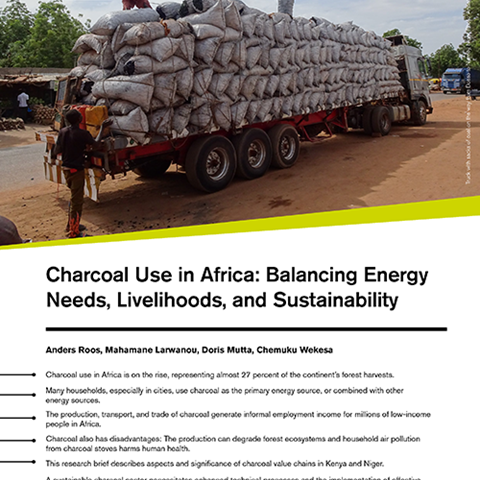Facts:
Roos, A., Mutta, D., Larwanou, M. and Wekesa, C. 2024. Charcoal use in Africa: Balancing Energy Needs, Livelihoods, and Sustainability. Forest Facts 2024:6, Swedish University of Agricultural Sciences.

The use of African charcoal provides essential income for millions of people. Charcoal also provides a simple and manageable energy source; however, it is also the source for air pollution which brings with it devastating effects. Researchers in a new Forest Facts sheet claims that therefore better technology, sustainable forestry and equitable regulations are a necessity.
On the African continent, nearly 27 percent of the forest harvest goes to charcoal—an ever-increasing percentage due to population growth and urbanization. Tracing the journey of charcoal, from forest to the stove, offers deeper insights into its impact on sustainable development in Africa. The charcoal provides an extra income for people involved in the production and for the consumer it is an energy source that is both flexible and available. However, it can also lead to forest depletion and air pollution, which may result in premature deaths, particularly affecting women and children. Efforts to address these issues have been made in Kenya, but unfortunately, they have led to increased poverty among both consumers and producers, as well as the continuation of the trade, now driven underground.
Increased use of charcoal equals increased trade across borders which in turn underscore the need for more coordinated policies between the countries. A new issue of Forest Facts explores the value chain of charcoal and recommends more equitable energy access, more accessible knowledge on both forestry and production methods, and the development of regional collaborations.
Roos, A., Mutta, D., Larwanou, M. and Wekesa, C. 2024. Charcoal use in Africa: Balancing Energy Needs, Livelihoods, and Sustainability. Forest Facts 2024:6, Swedish University of Agricultural Sciences.
Anders Roos, anders.roos@slu.se, +46(09739840705